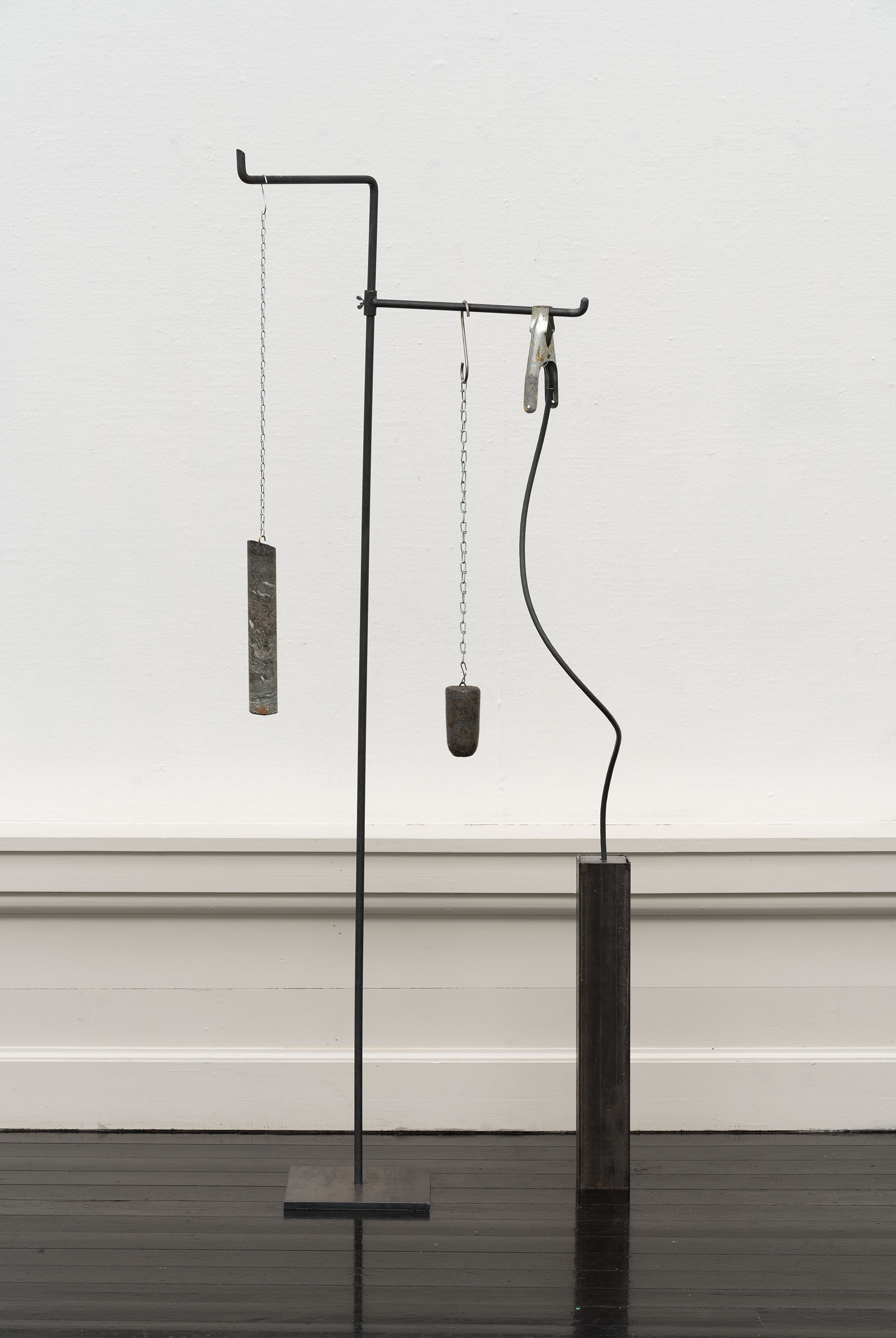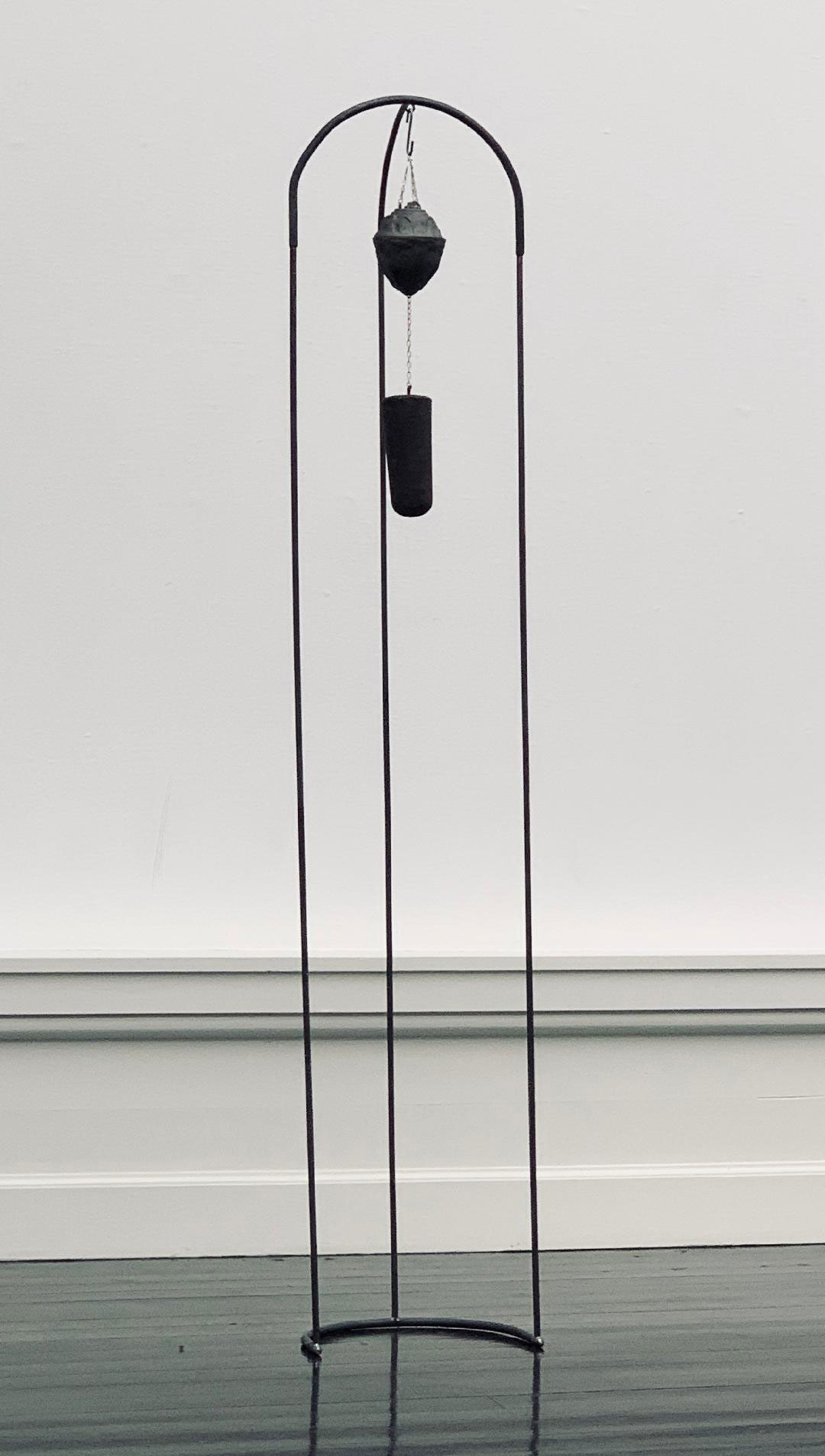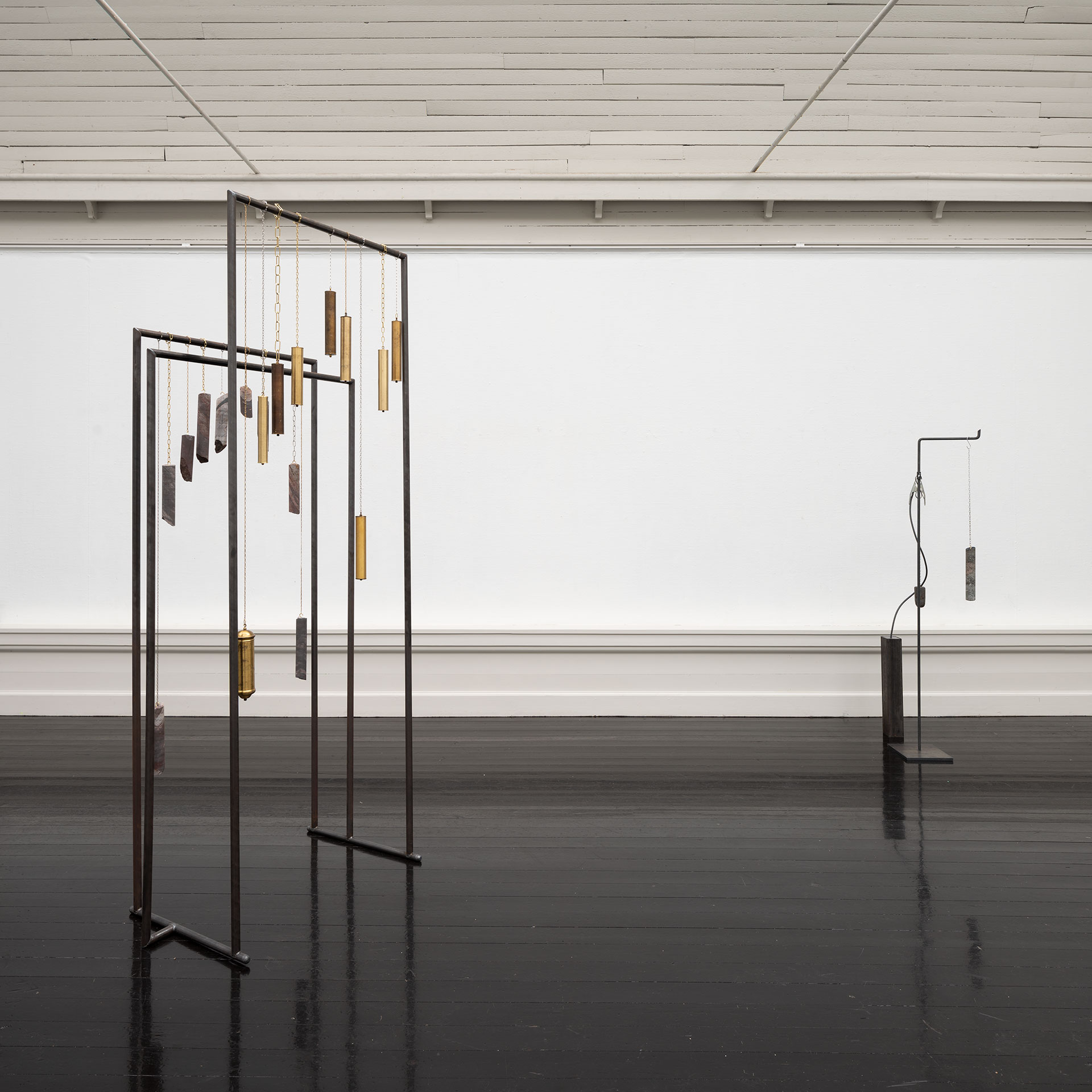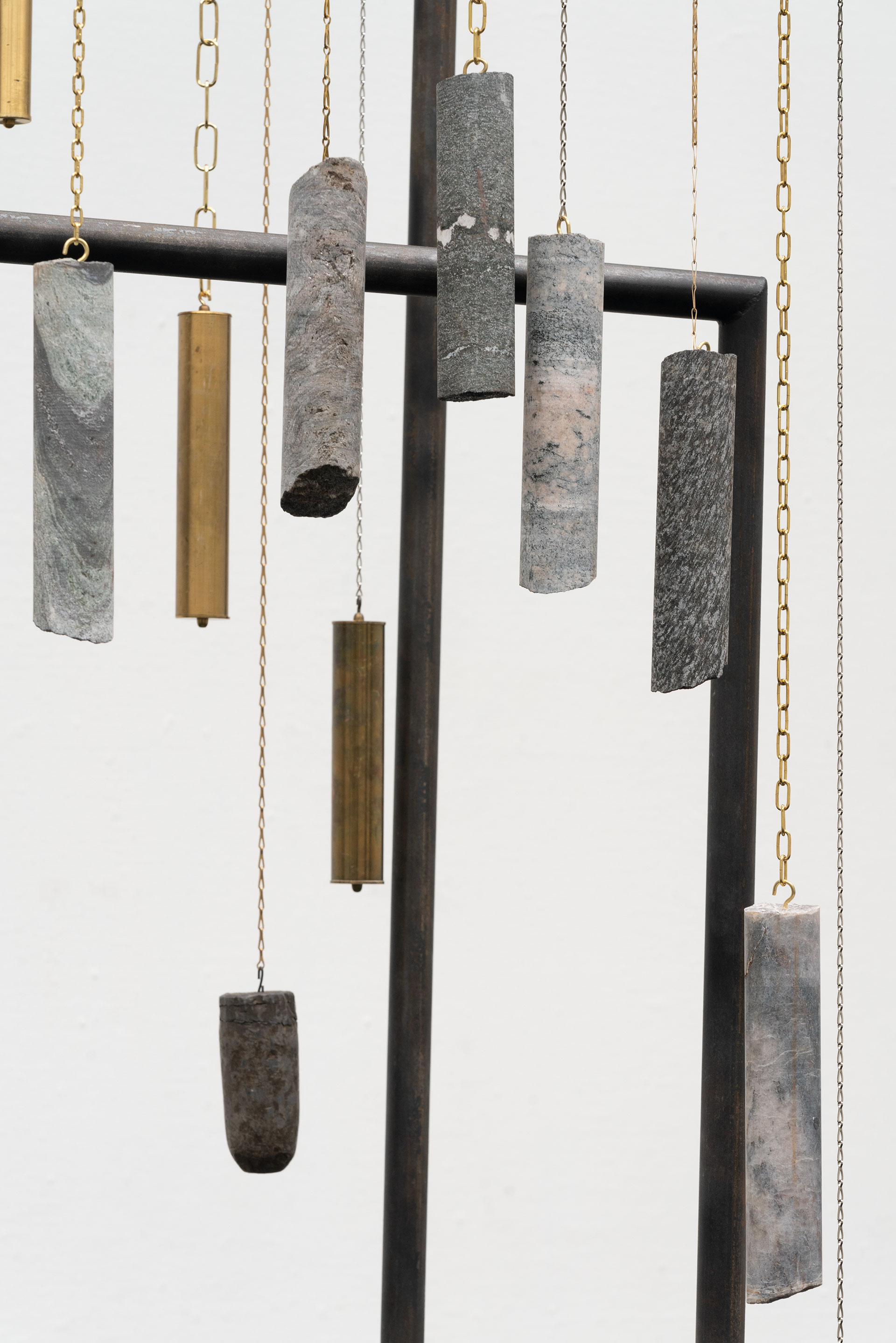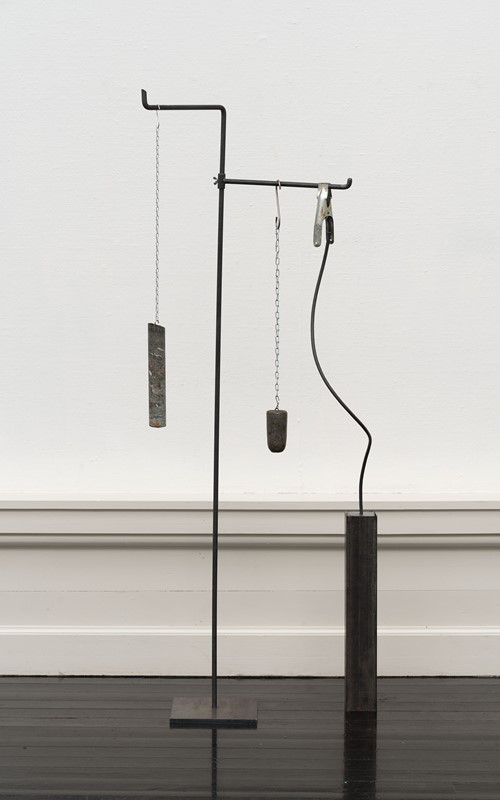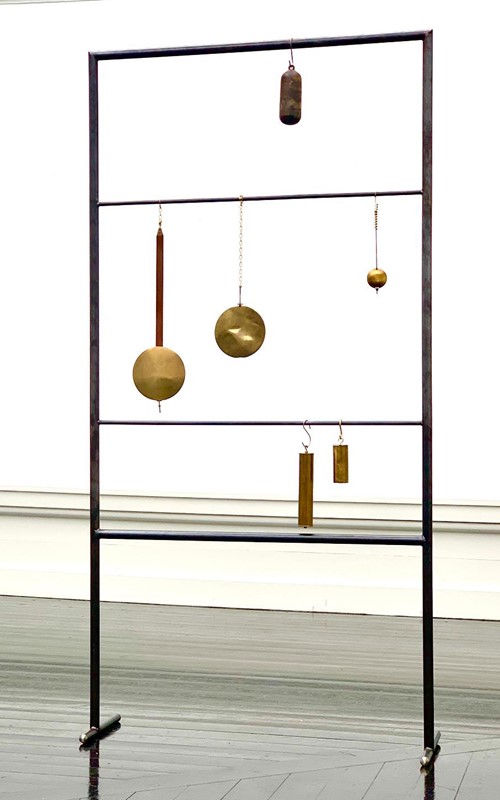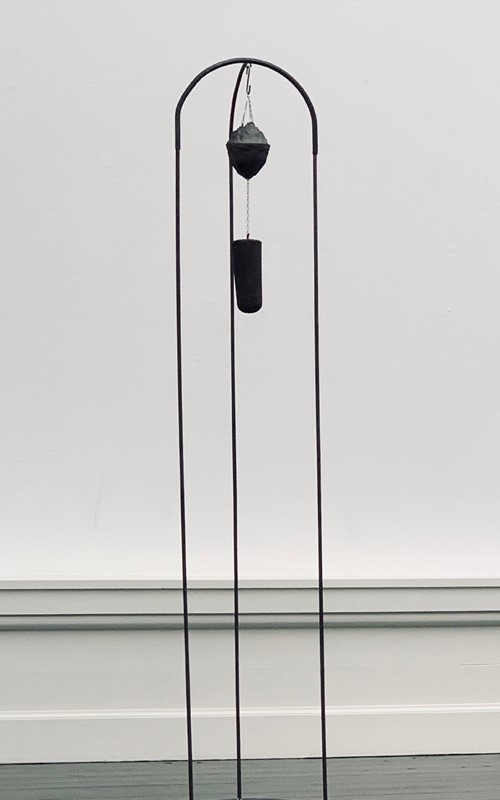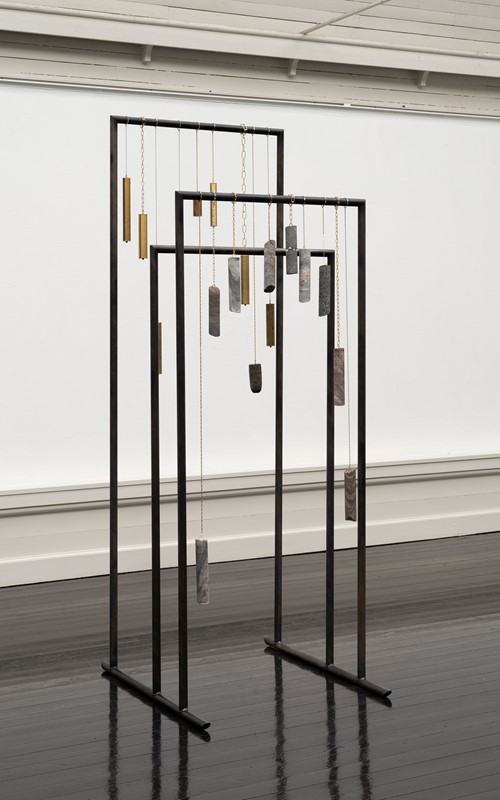Listening Back In Time
Grandfather-clock pendulums are hanging from metal chains as a tangible notion of experienced time. Alongside them, cylindrical iron cores lead us back to the early life of Earth, serving as direct representations of deep geological time. Connected through an electrical charger are the sound recordings from the Orion Nebulae through ALMA (Atacama Large Millimeter/submillimeter Array) radiotelescopes. ALMA identifies molecules from the analysis of the radio waves it captures. Each specific emission corresponds to a molecule. These radio waves are reinterpreted as sound waves. Each emission captured from Orion is assigned a combination of sound waves. ALMA Sounds seek to decode and interpret the frequencies of the Universe and transform them into sound, just as the purple light hints to the invisible light emitted by the dust and gas in the nebula present in Orion.
The work took shape during Kalsmose residency stay at the ALMA Space Observatory in the Atacama desert of Chile, where she observed the astronomers' work. While they transformed radio waves into information, Kalsmose engaged in a parallel process – translating their technical findings into visual art, thereby allowing us to better sense the deep time embedded in the materials and sounds.
______________________________________________________________________
Traces of Memory, Spatial Memory, Points in Time and Untitled explore different understandings of the concept of time, of which Kalsmose is particularly interested in the so-called deep time. The concept of deep time was first described by the Scottish geologist James Hutton in the 18th century and refers to a geological understanding of time, based on geological shifts and markings. For example, we are currently in an era defined by the stars and the energy they create. Deep time extends over an infinite number of years, both in the past and in the future, and therefore appears intangible and abstract compared to the time horizon we operate with in our everyday life.
Photos by David Stjernholm
